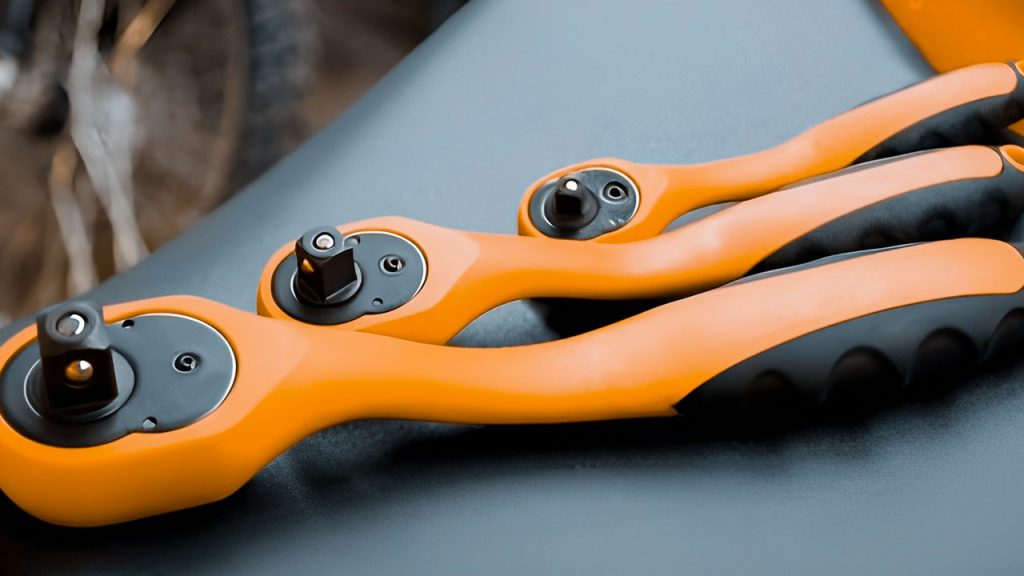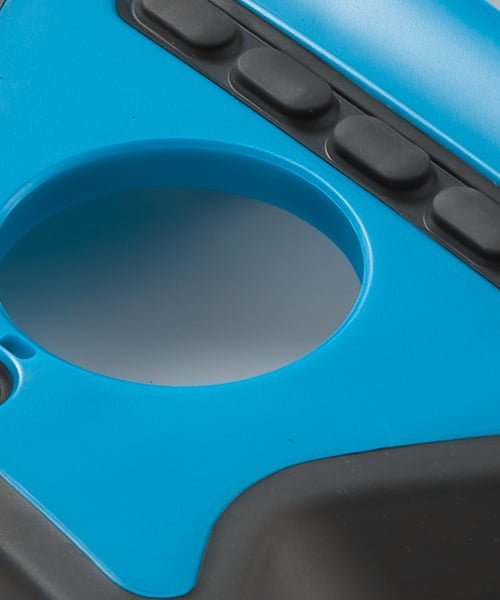Injection molding is a common quick prototyping method used in the mass manufacturing of numerous materials. Injection molding comes in a variety of varieties. Using the Overmolding process and insert molding process, for instance, are two examples. Despite belonging to the same group, each kind has a unique mode of operation.

The Overmolding Services, a particular injection molding procedure utilized in several sectors to produce components built from different materials, will be examined in more detail in this article. Check out the information below to learn more about when to employ the overmolding technique with injection molding.
Overmolding: What Is It?
In order to form a solid product, molten materials are typically injected into a mold cavity during the traditional injection molding manufacturing process. To create sophisticated objects, however, product designers or prototype designers might employ a variety of techniques within the field of injection molding. Overmolding Services is one of the various processes used in injection molding goods that is well known and has a general industrial use.
In the process of overmolding injection molding, the material is added (overmolded) to an already-existing item or structure known as the substrate. A rigid substrate (such as metal, plastic, or glass) and rubber or thermoplastic as the overmold material are frequently used in the overmolding process. For the overmold, we can use several materials. The majority of overmolds, nevertheless, are softer and more malleable than the substrate. For the finished product to have the desired effect, you may also combine the overmold with other ingredients like colorants and foaming agents.
Many different manufacturing and industrial sectors are affected by Overmolding Services. Although urethane casting may also be used to create high-end prototypes, the procedure uses the injection molding technique. Combining two or more layers of material is made easier with the aid of injection molding. Both rubber and plastic overmolding can benefit from the procedure. Industries that need to produce prototypes of various industrial machine parts quickly might benefit from Overmolding Services. The method is handy when creating unique components that combine rubber or plastic with other materials, such as metals.
Similar Styles of Overmolding
Understanding similar forms of Overmolding Services is necessary to comprehend how the overmolding process operates entirely. These categories will encompass the majority of manufacturing-related overmolding initiatives. Here, we’ll explore them in more detail.
- Insert Molding:
When working with plastic injection molding, insert molding is the most common technique. It includes both flexible elastomers and solid and stiff plastics. Because the insert molding technique is simpler to carry out, it is the optimum type of overmolding for these materials. It follows that it is the most cost-effective among the overmolding procedures.
- Bi-Injection Molding:
Bi- or dual-injection molding is a similar common kind of overmolding. This one is the most costly and the hardest to manage. This procedure differs from overmolding in that an overmold is not injected into an existing substrate. One of its most significant advantages is that all materials are molten during the injection molding process. It enables the best possible overmolding and material adherence.
How Is The Overmolding Procedure Carried Out?
The procedure for overmolding an injection-molded object is pretty simple. Using conventional injection molding techniques, workers form the substrate initially. The substrate can also be created via CNC machining. The substrate is finished and then put into a new mold. After being injected into the new mold, the overmold material—often a resin—bonds with the substrate.
There are two main mechanisms through which the two materials in the injection overmolding bond. The substrate and the overmold material may bind chemically or mechanically during the injection moulding process. By including undercuts into the design, the substrate and overmold are made to lock into place, which improves mechanical bonding.
When Should the Overmolding process Be Used?
It’s crucial to take into account the specific needs of Overmolding Services when developing components. When developing components, it’s crucial to consider the overmolding process’s specific needs. For instance, the thickness of the wall of the substrate will affect how effectively the overmold material flows in, on, or around it. Inconsistent wall thickness will also cause warping, an increase in a flash, or even partial fills because of the large temperature difference between the overmold material and the substrate. Ensuring that the substrate and overmold have uniform, constant wall thicknesses from the beginning is the greatest strategy to minimize this danger.
Although Overmolding Services are a very flexible production technique, there are a few circumstances when it could be advantageous to employ an alternative approach. The greatest method for quickly creating lots of similar pieces is overmolding. The upfront expenditures of overmolding might not be worthwhile for companies looking to produce a small number of specialized items in the long term. When overmolding, tooling costs might be significantly greater than traditional injection molding. This expense is due to the additional material required to create both the substrate and the over-molded tools and the accuracy required for component alignment during the overmolding process.
Insert molding is a comparable method that provides over moldings advantages on a smaller scale. A metal insert is encased in molten plastic during insert molding, creating a single, sturdy component with the extra benefit of the metal insert’s superior material qualities. When making intricate pieces in lesser quantities, this method is more economical than overmolding. Threaded inserts and compression limiters are the two sorts of inserts that are used the most, while there are numerous additional varieties as well. These types of inserts make it possible to create assemblies with greater complexity and performance. It can determine your future project’s suitability for overmolding with the assistance of a manufacturing partner.

Selecting the Proper Material for the Overmolding process?
The injection overmolding is used in a few fundamental configurations in each application area:
- Plastic overmold with a plastic substrate
- Plastic overmold on a metal substrate
- Using a rubber overmold on a plastic substrate
- Rubber overmold on a metal substrate.
You can employ a variety of material combinations in each situation. Some, nonetheless, work better together than others. Compatibility is crucial during the overmolding process to form the chemical and mechanical linkages between the CNC-machined or injection-molded substrate and the over-molded layer. Following the Overmolding Services, incompatible materials may cause poor bonding or product deformation.
Additionally, the substrate you are working on has a significant role in compatibility. For instance, various appropriate plastic or rubber materials are available for overmolding when dealing with a metal base. It would help if you were cautious when using some incompatible combinations while dealing with a plastic substrate. A substrate composed of polycarbonate or acrylonitrile butadiene styrene and an over-molded component made of thermoplastic polyurethane or thermoplastic copolyester are examples of frequently used plastics combinations.
It is crucial to get expert advice on Overmolding Services to evaluate if a particular polymer mixture is suitable for overmolding. Most of these companies have strong relationships with their raw material suppliers. As a result, before beginning manufacturing, you will be able to determine whether a pair of materials is compatible or not.
Implementation Of The Overmolding Process:
Considering how frequently we come into contact with over-molded objects, the applications for Overmolding Services are nearly endless. However, the method is used in some of the examples below.
Equipment Tools:
A typical method used in producing numerous hardware tools is injection overmolding. Tools like screwdrivers, pliers, wrenches, hammers, tape measures, pocket knives, and blades are a few examples. Given the grip it gives the hardware tools, the overmolding procedure is significant in this situation. Handling the majority of these hardware tools would be challenging without an over-molded handle. Different polymers can be used as the substrate’s overmold. The most popular are plastics.
Surgical Equipment:
The demand for accuracy and product safety makes Overmolding services and technology valuable for the medical business. The substrate and overmold materials employed can make or break the sterility and ease of cleaning of the instruments produced by the procedure. Syringes, patient monitors, needles, catheters, dilators, soft-touch buttons, and other surgical instruments are examples of those created using the injection overmolding process.
Simple Household Goods:
It should come as no surprise that you find the Overmolding services beneficial in producing a variety of home objects given the benefits it has on its products, such as an improvement in grip, use, and cleanliness. The overmolding method creates goods such as toothbrushes, cooking utensils, multi-port chargers, portable electric fans, mirrors, pens, shampoo bottles, and reusable food containers.
Cookware:
Making cookware, food containers, and kitchen utensils is another area where overmolding is important. Plastic is over-molded on the cookware’s pieces to boost insulating qualities and make it easier to grasp. As a result, it improves consumer safety.
Tips: For pics of overmolding, click here
When creating items that require up to tens of thousands of pieces, injection Overmolding services are the best option. Overmolding may also be a useful prototype procedure for clients needing bulk manufacturing of millions of pieces. Prototool can assist you in getting the most remarkable outcomes for your product since they have in-depth expertise in the injection molding procedure.










